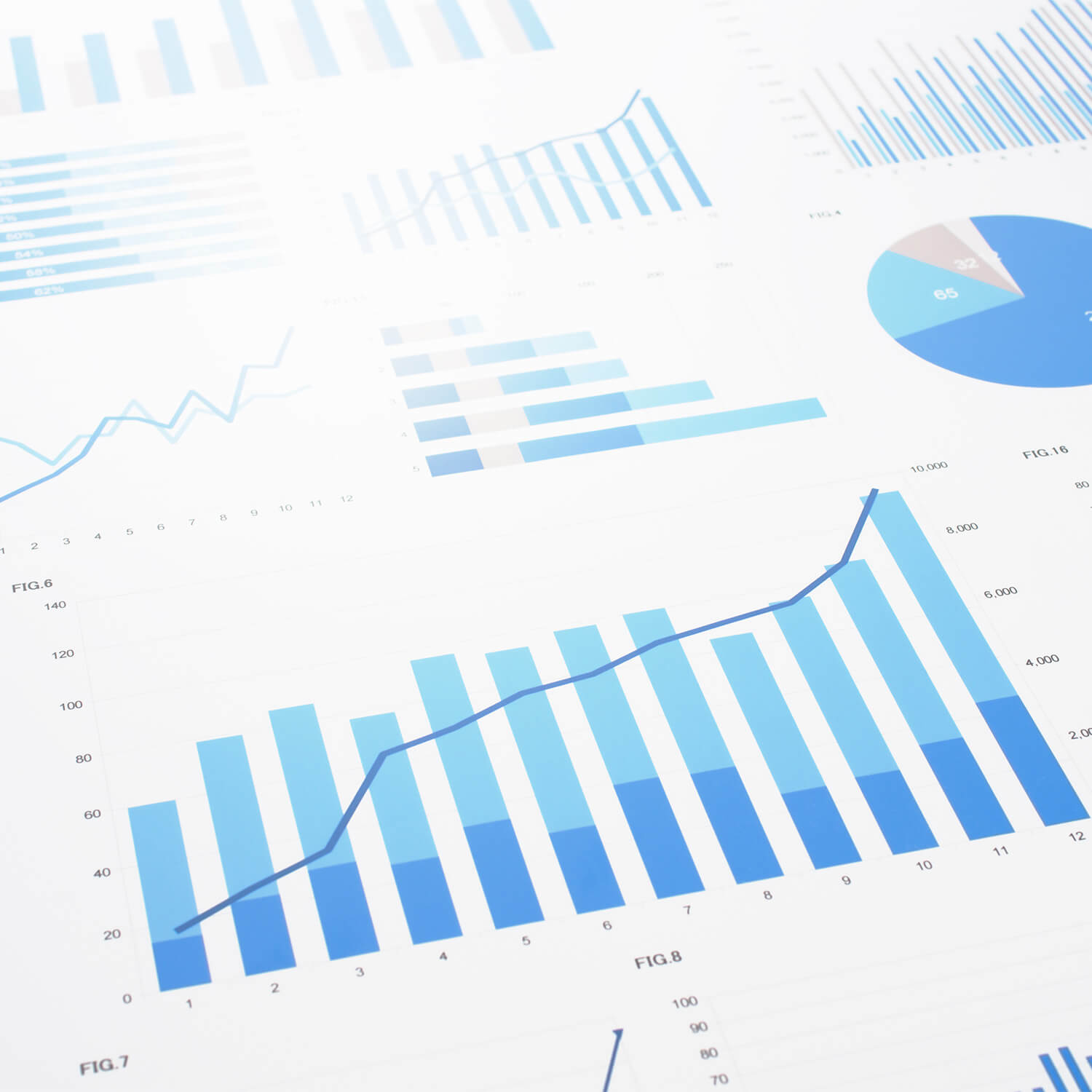Using data to understand classrooms and support sustainable funding
AV technology-enabled classrooms enhance education. Data-driven classrooms enhance the sustainability of education funding.
It’s hard enough to keep up with technology needs on higher ed campuses. It’s even more difficult to manage and predict the costs of staying up to date with your technology infrastructure. But every college or university administrator knows just how important it is to develop a sustainable model for technology investments, especially in an era of constant technological change.
So how do you develop the model you need? A key component in devising the best way to achieving funding sustainability is to gain a clear understanding of how your classroom technology is being used.
Your first step is to speak with or interview faculty, facilities staff, IT team members and other stakeholders about the technology they use, how they use it, and what they expect of it from a pedagogical perspective. What yields truly actionable data, however, is the combination of qualitative and quantitative inputs. And for quantitative measurements, you need a trustworthy, comprehensive classroom technology monitoring system.
Table of Contents
Welcome to Anytown U
Imagine a moderate-sized university with perhaps 100 rooms equipped with a variety of AV technology. In the era of the digital learner and hybrid content delivery, there will probably be many additional learning spaces that currently have no AV capabilities but will need them – sooner rather than later.
In most higher ed classrooms, devices are added and removed on an ad hoc, sporadic basis, and a lack of central management means the school has nothing approaching a comprehensive schedule for updates. Administrators may not even know exactly what equipment their classroom technology infrastructure comprises.
Now let’s say you’ve come to realize the importance of having a strategic plan for technology upgrades. After all, there’s only so much money to spend, and you need to maximize your ROI while delivering the best possible experience for staff and students. In the face of shrinking budgets, growing unpredictability, and mounting competition for learners and faculty, every decision needs to be grounded in data.
A patchwork of ad hoc purchases
Typically at a university, departmental chairs will request funds for projects or purchases. If they don’t specify technology needs, then their classrooms essentially become stuck in time. The IT department will handle break-fixes, but the core equipment inventory remains the same. When department heads do requisition technology upgrades, they often request the updated version of what they already have. Seldom will they switch to an altogether different technology (they’re most likely unaware of the alternatives). What they end up with is typically a uniform suite of products – perhaps a display, document camera, cable TV analog input, digital input, AUX video, an Apple TV and other equipment.
Updating a default assemblage of gear, multiplied by X number of rooms, will not be cheap. Yet how much of that gear is really needed? What’s actually used? Some of the equipment might be essential. Other devices are just along for the ride. With no strategy behind the upgrades, the school is guaranteed not to get its money’s worth.
A smarter way to move forward
It’s important to explore how to keep upgrade costs manageable while retaining essential equipment and jettisoning what you don’t need.
Here’s where a comprehensive, proactive monitoring system brings value. Along with providing information about which devices are working and which are prone to breakdowns, its data-collection and monitoring capabilities show trends and usage statistics, telling a detailed story about how the AV technology is being used (or not used). Presented with these statistics, the department heads can make much smarter, more targeted funding requests.
Over the course of an academic year, you’ll know enough to dramatically reduce your technology upgrade costs. That’s because not all classrooms need every capability. Some spaces, departments and disciplines will have very specialized needs that are quite different from those of other departments.
You may find, for example, that a classroom’s PC, display and Apple TV are operated quite often, but document cameras and wall plates receive much less use. Then there are the ancient or obsolescent technologies like DVD players or analog PCs. These need to be redeployed to the recycler.
Armed with detailed information about device usage, you won’t be upgrading 10 items in a room, you’ll be upgrading four or five – if that. The money you save (multiply it over many dozens of spaces) can be put to much more effective use elsewhere.
And the savings aren’t just one-time gifts to your budget. The information you track can help you create a sustainable strategic plan that will improve ROI and enhance predictability in your budgeting well into the future. Moreover, by focusing on the upgrades that count, you can get more of the important ones taken care of within a short period of time. The time and logistical savings are a tremendously important consideration in academic environments, where year-round heavy usage of facilities provides limited windows for disruptive technology upgrades.
Another bonus: the information you collect and analyze will be vastly beneficial when making decisions about technology in other learning spaces, particularly new and renovated ones. Moreover, by sharing your trends and usage stats with other departments and committees, the institution as a whole benefits. At Wake Forest University, for example, a Learning Spaces Committee composed of instructors, administrators, technologists and students incorporates monitoring data to guide purchasing and help develop technology standards that are applied campus wide.
It all comes down to use. In the data-driven classroom, on a data-driven campus, each device is optimized for utility, resulting in a better experience for students, and a more sustainable bottom line for administrators.
Creating data-driven classrooms:
Asking the right questions will generate the answers you need
 Teaching is an art – but to get the most out of its investment in classroom technology, higher education is increasingly turning to science. Specifically, data-driven decision making.
Teaching is an art – but to get the most out of its investment in classroom technology, higher education is increasingly turning to science. Specifically, data-driven decision making.
In the digital age and, particularly in this hybrid era, colleges and universities are scrambling to meet students’ needs and expectations, as well as faculty requirements, all while accommodating the hard realities of capital budgeting.
The rapid pace of technological development, combined with increased competition for students and uncertainty surrounding how the higher educational landscape will evolve in the future, only increases the pressure on colleges and universities to “get technology right.” And data is a key in doing it.
So what precisely is the data-driven classroom?
In the simplest sense, it’s one equipped with input sources that provide measurable data on how the space is being used and how classroom technology is performing relative to expectations. Without these inputs, schools can struggle even to know if their equipment is working, or why it’s not working.
“Every year, throughout the year, schools are faced with decisions about where to invest their budget in order to get the highest return,” says Greg Koerner of Pro-Tech Management. “Yet until the present day, there haven’t been very effective ways to measure ROI from those expenditures. Thus, most funding and deployment decisions have been made essentially on anecdotal gleanings.”
Every institution understands the logic of the data-driven classroom, and many have tried to gather and process the information needed to make informed decisions. But too often the burden of data collection and interpretation falls on faculty who have countless other matters to deal with – not least the actual act of teaching.
“Prior to joining Pro-Tech, I spent years managing technology at a very large state university system with a vast network of classrooms and other teaching environments,” continues Koerner. “We were always searching for a better, more trustworthy way to improve our decision-making, especially when budgeting time rolled around. It was clear that better data leads to better decisions, but getting that data proved surprisingly challenging.”
And the survey says…
Interestingly, a fairly old-fashioned method is a great way to start the move toward data-driven decision making. Koerner suggests starting with a simple survey for faculty, facilities/technology managers, and administrators. Survey topics would cover how faculty use the classroom, which technology they rely on, and – crucially – to what extent and in what manner they use that technology. Even better, a well-designed survey will ask about overall teaching styles and objectives – the big picture, not just the technology view.
“It’s absolutely essential to have respect for pedagogy and the wide range of teaching styles that are employed,” says Koerner. “You need to know the who, what, and why behind those methodologies. Only then can you marry them up with the right technology. Some staff don’t rely on technology at all. They barely use an overhead projector, preferring instead to grab a piece of chalk and head for the blackboard. Other faculty members make consistent use of technology, but might be unaware of their system’s limitations and the availability of new products that could sync perfectly with their teaching style and help them communicate ideas more effectively. It’s amazing how many professors still swear by their DVD players or overhead projectors, for example.”
Learning about the teachers
A good survey will glean from instructors not just what kind of technology they believe is needed in their classroom, but what they actually want to achieve with the technology. “Armed with that knowledge, I can make very specific product recommendations that will advance their objectives,” Koerner explains.
Aggregation and analysis of survey data will provide key insights into how learning spaces are used not just by one instructor and body of students, but by multiple users throughout the day, week, and academic year. “In generations past, schools had small classrooms, lecture halls and auditoriums, and highly specialized lab environments. That was about it,” says Koerner. “Today’s higher education environment requires much more flexible spaces, particularly with the emphasis on STEAM and STEM. We’re done lecturing about how to do it. We’re in an era of demonstration and doing, and for that you need much harder-working environments.”
It all comes together
Equipped with survey information about how spaces, and the technology in them, are being used, administrators and technology managers will then have the grounding to interpret the detailed information a data-driven classroom provides, including valuable data about the technology needs and habits of particular instructors.
“Often we’ll find that an instructor has a preference for a certain kind of data visualization system that turns out to be unreliable, or not actually put to significant use,” says Koerner. “In either case, neither the university nor the students are getting full value from that technology expenditure. That understanding can lead the university to make wiser purchases or better technology management decisions that accrue to everyone’s benefit.”
Consider the department head who swears by a specific kind of smart board and insists that classrooms department wide be equipped with it. The data might show that hardly anyone else is using the technology – or maybe they’re using it, but not to the full extent of its capabilities. The combination of hard data from a monitoring system combined with the goal-focused insights from staff surveys can point the way to alternative approaches that may see much wider adoption and lead to better understanding and retention on the part of students.
Letting data guide investments
Obviously, information gleaned from the data-driven classroom also guides technology purchasing and maintenance decisions. For example, colleges and universities that use qualified proactive technology aren’t just kept informed about the working status of their classroom technology infrastructure. They receive detailed data and analytics telling them about which devices are being used, when they’re being used, and by whom. Moreover, when technology fails occur, proactive management can provide insight into the precise cause of the problem. Did the device itself malfunction, or was the breakdown a result of the user’s actions? Knowing this, the IT staff can either search for better products, or invest resources in improved user training.
Surveys provide key information about goals, objectives, and teaching methodologies. Data-driven proactive device management technology provides insight into whether the devices used in that classroom are helping or hindering staff and students in their quest for knowledge.
“The information you need is out there,” Koerner says. “You just have to mine it. The next step is to monitor it and take informed action in response to it.”
How AV Monitoring & Management Answers the Question: Why Is Data in the Classroom Important?
There’s a reason “data” and “analytics” are spoken of in the same breath. Data, no matter how painstakingly gathered, is useless without expert analysis. And analysis is only as valuable as the data on which it’s based. That’s especially true when examining why data in the classroom is important.
In the quest to design more functional, efficient, sustainable classroom facilities, data has traditionally come at a premium, and the process of analyzing it exacted significant costs on already overworked facilities managers, curriculum designers, and IT teams. But the tide has turned. Colleges and universities now have the means to gain laser-sharp, actionable insights into where classroom educational technology dollars work hardest for their students.
Advances in technology coincide with the need to refine the process of outfitting classrooms. “When the pandemic hit in 2020, higher-ed moved with unprecedented speed to accommodate the new reality, but the need was so pressing – and the sense of uncertainty so great – that many institutions just threw everything they had at the problem,” says Maureen Corlett, manager of business development CDW, a leading provider of IT solutions and services for the education and corporate sectors.
Analytics shows why data in the classroom is important
 “Now we’re on the other side of the pandemic, and while the push for hybrid technology in classrooms is as strong as ever, colleges and universities are being more focused about how to meet their needs,” continues Corlett. “They’re exploring solutions through the lens of technology and pedagogy alike. For example, they’re rethinking the definition of learning spaces and exploring variations like split classrooms, open classrooms and scale-up type classrooms, and they’re asking how the technology in those spaces helps to take instruction to the next level.”
“Now we’re on the other side of the pandemic, and while the push for hybrid technology in classrooms is as strong as ever, colleges and universities are being more focused about how to meet their needs,” continues Corlett. “They’re exploring solutions through the lens of technology and pedagogy alike. For example, they’re rethinking the definition of learning spaces and exploring variations like split classrooms, open classrooms and scale-up type classrooms, and they’re asking how the technology in those spaces helps to take instruction to the next level.”
Supply chain issues have also spurred purchasers to take a more considered approach to deciding on the technologies they’re going to adopt. When the technology you’ve used in the past suddenly has a year-and-a-half long lead time, you have to explore alternatives.
Wary of making large investments in an uncertain environment, a growing number of schools have embraced a piloting approach to technology adoption. Instead of rolling the dice on a universal model for classroom design, they’re testing out a number of options before making a final decision on where their educational technology dollars will go.
“This is the right time to embrace the data yielded by remote AV monitoring and management technology,” explains Corlett. Software solutions providers like Utelogy, in combination with their implementation partners, are able to generate accurate data on who is using which devices, when, and in what manner. If you’re trying to decide which of the potential classroom technology solutions you’re piloting offers the most value, 24/7 monitoring can shed a lot of light on how to proceed with the new classroom environment.
The evolution of the data-driven classroom
“What’s also interesting is how useful this data can be when you’re deciding how to evolve existing classroom facilities,” adds Corlett. Let’s go back to the fully equipped classroom created in response to the fast-spreading pandemic. Whether you ask students, faculty or support staff which solutions they’re willing to part with, a common response is, “Don’t take anything away!” The feeling is that they fought hard enough to get the hardware and software in the first place, and they don’t want to risk the consequences of relinquishing it.
Muddying the waters even further, survey data is often unreliable about which classroom technology is valuable and which is no longer needed. “Survey respondents can overestimate equipment use. They can also tailor their answers to what they think the surveyor wants to hear,” says Greg Koerner of Pro-Tech Management (PTM), Utelogy’s partner in remote AV technology management and monitoring.
The data generated by PTM and Utelogy can provide a clearer picture of what equipment is actually being used, and that insight can lead to significant savings. “Think about the price you may be paying for software license renewal,” adds Koerner. “For every license you discontinue based on the fact that no one’s using it, you’ll save a ton of money.”
Catering to the individual, serving the institution.
Along with equipment usage data, 24/7 remote monitoring provides essential information on the working status of educational technology – information that can have a profound impact on budgeting sustainability, according to instructional designer Stephen Elmer of the Michigan State University College of Osteopathic Medicine.
“In a medical school environment such as ours, a large class will have students break down into small groups for hands-on instruction,” says Elmer. “To meet their needs, a university will need environments where, say, 6 to 10 students can learn and demonstrate various techniques under close supervision. Display technology is important, but it’s even better to have videoconferencing and recording capabilities. The problem is that these rooms can be difficult to monitor, and because they see such heavy use, when the technology fails it can have a cascading effect across cohort groups.”
Students also form small working groups on their own accord. Some enable collaboration among students who have a shared area of academic interest. Others provide an opportunity for clubs and service organizations to convene. To meet students’ needs in this regard, a school may wish to make a number of videoconferencing-equipped meeting room environments available, or equip a range of huddle spaces with videoconferencing technology.
The value of such spaces is even greater when students are spread across campuses. “Let’s say you have one large campus and a number of satellite campuses,” says Elmer. “Videoconferencing capabilities can play an important role in keeping students on the smaller campuses connected to the larger student population.”
Managing, monitoring, saving
The challenge for the university, however, is that more spaces require more management. The school might not have sufficient IT staff to proactively ensure that collaboration spaces are all in working order. Here, remote monitoring and management can provide 24/7 insight into the working status of a room’s technology infrastructure. Email and dashboard alerts inform IT staff of issues, giving them enough time to fix problems before they lead to scheduling disruptions.
“Think about small educational environments that are used for hands-on instruction,” says Elmer. “If one or two of these spaces are suddenly found to be non-functional, the students who were going to use them will have to join other groups. Now a room designed for 8 students has to accommodate 12. Inevitably, the educational experience is degraded.”
For Koerner, 24/7 monitoring of a customer’s AV infrastructure is a powerful driver of efficiency. “Being 100% aware, 100% of the time gives you real insight into the value you receive from your investment in educational technology. More than that, it allows you to use your existing service, support, and IT management resources more efficiently. Instead of spending their time managing a myriad of devices, your IT team can put their talents to use where they’re really needed: on more challenging issues that require the kind of expertise they’ve cultivated.”
From ensuring educational continuity, to optimizing pedagogy, to utilizing labor more efficiently, remote monitoring and management not only delivers valuable data – it delivers on the data-driven classroom’s promise to provide actionable insights to improve learning.


